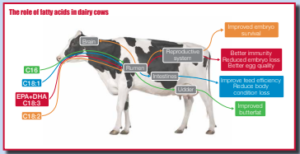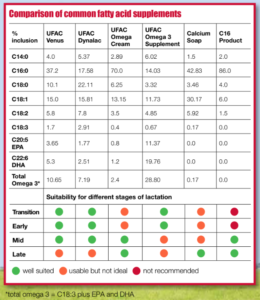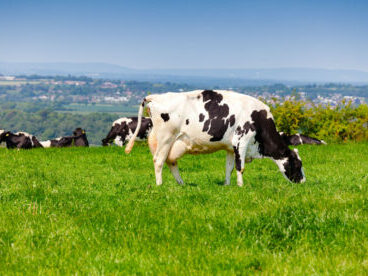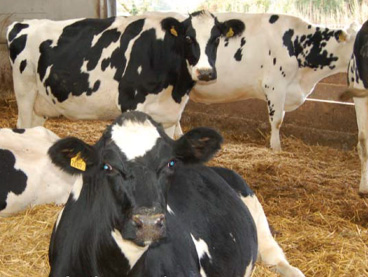For years, dairy farmers have been encouraged to add fats to their diets, primarily as a way to improve energy density and increase production.
Understanding fats – unravelling the fatty acid maze
For years, dairy farmers have been encouraged to add fats to their diets, primarily as a way to improve energy density and increase production. But as Mike Chown, UFAC UK National Sales Manager explains, feeding the correct fatty acids at the appropriate stage of lactation can have a significant impact on efficiency which is why UFAC UK have been producing tailored blends of fatty acids for over 30 years.
Fatty acids perform different tasks in the cow. Feeding the correct fatty acids, in the optimum ratio at the correct stage of lactation can have a significant impact on performance in numerous ways.
Feeding the right fatty acids can help reduce bodyweight loss in early lactation, it can improve overall feed efficiency, it can help improve reproductive performance and it can increase the yield of high quality milk cost-effectively. Feeding the wrong fats can reduce performance and show a poor, if any return on investment.
Our experience, gained over many years is that fatty acid blends are a way to improve productivity and margins.
Which fatty acids are important?
There are seven fatty acids whose roles need to be understood if diets are to be produced that optimise performance. Each can have different effects at different stages of lactation. A failure to feed the correct fatty acids can compromise performance and some fatty acids can actually have a negative effect on performance. The fatty acids which need to be included in dairy diets are:
Palmitic acid C16:0 which is used directly by the udder to improve milk fat Oleic acid C18:1 which improves the efficiency of digestion of all fats in the diet and helps reduce negative energy balance and body fat mobilisation.
Linoleic acid C18:2 also known as Ω6, this is an essential fatty acid which can not be produced by the cow but has an impact on reproductive performance.
Linolenic acid C18:3 a source on Ω3, it has an impact on egg quality and embryo survival.
EPA and DHA C20:5 and C22:6 from marine sources are the most effective source of Ω3 and have a positive effective on reproductive performance and the immune system.
In early lactation you need to focus on the fatty acids which promote improved feed efficiency and which boost reproductive performance and the immune system to helps cows transition and get established in lactation and back in calf. In mid and late lactation the principle need is for fats which promote improved milk yield and butterfat.
One fatty acid which is common in dairy diets but which has a negative effect and should not be included in high levels in any supplement at any stage of lactation is Stearic acid C18:0. It has a negative effect on overall feed efficiency, can increase body condition loss and lead to reduction in the effectiveness of the foot pad resulting in more lameness.
Tailored fatty acid blends deliver optimum performance
Not all fatty acid products contain optimum blends to meet the cow’s requirements at specific stages of lactation. At UFAC we have used our understanding of fatty acid utilisation in ruminants, build up over many years, to develop a range of products which can meet the requirements of dairy cows. The table compares 4 UFAC products with standard calcium soap and C16 products and shows the impact that blending can have, providing a balance of fatty acids and allowing products to be selected to meet the demands of cows at different stages of lactation to drive efficiency.




 Back to News
Back to News 



